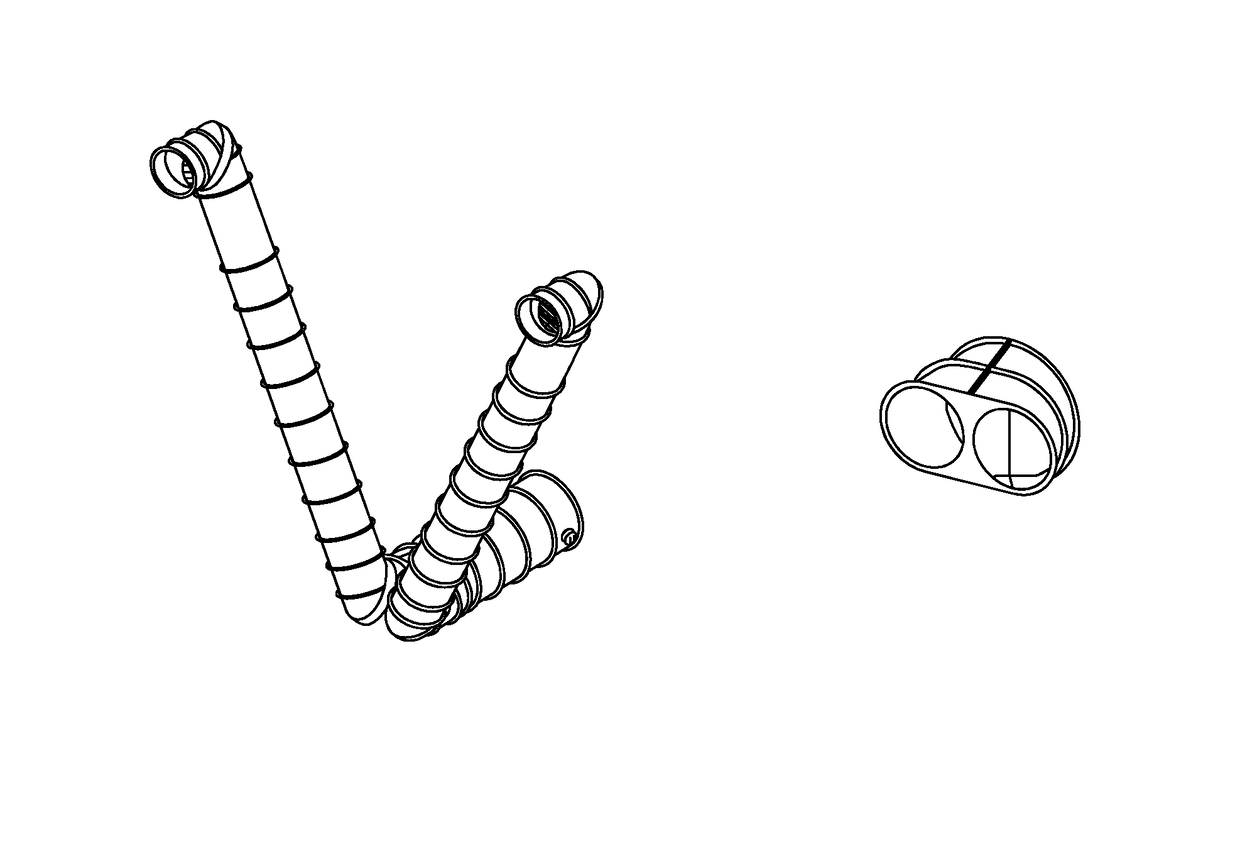Turbine exhaust duct design for air cooled condensers
a turbine and exhaust duct technology, applied in the field of air cooled condensers, can solve the problems of high installation cost, high installation cost, and difficult welding of the t-piece of the steam turbine exhaust duct, and achieve the effects of improving the overall efficiency of the steam cycle plant heat rate, and reducing the steam-side pressure drop
- Summary
- Abstract
- Description
- Claims
- Application Information
AI Technical Summary
Benefits of technology
Problems solved by technology
Method used
Image
Examples
Embodiment Construction
[0036]In the following description, numerous details are set forth to provide a more thorough explanation of the present invention. It will be apparent, however, to one skilled in the art, that the present invention may be practiced without these specific details.
[0037]FIG. 8 shows a double duct turbine exhaust duct system according to an embodiment of the invention. Prior art turbine exhaust systems approach an industrial air cooled condenser with a single duct and then divide the steam exhaust in opposite directions using a large and complicated T-piece fitted with guide vanes, see, e.g., FIGS. 1-3. In contrast, FIG. 8 shows an embodiment of the invention in which the steam exhaust either leaves the turbine or turbine transition piece in two separate streams or is divided into two separate streams shortly after it leaves the turbine transition piece. Each exhaust stream then separately approaches the ACC in its own turbine exhaust duct, and then is turned, without splitting, to fl...
PUM
 Login to View More
Login to View More Abstract
Description
Claims
Application Information
 Login to View More
Login to View More - R&D
- Intellectual Property
- Life Sciences
- Materials
- Tech Scout
- Unparalleled Data Quality
- Higher Quality Content
- 60% Fewer Hallucinations
Browse by: Latest US Patents, China's latest patents, Technical Efficacy Thesaurus, Application Domain, Technology Topic, Popular Technical Reports.
© 2025 PatSnap. All rights reserved.Legal|Privacy policy|Modern Slavery Act Transparency Statement|Sitemap|About US| Contact US: help@patsnap.com



